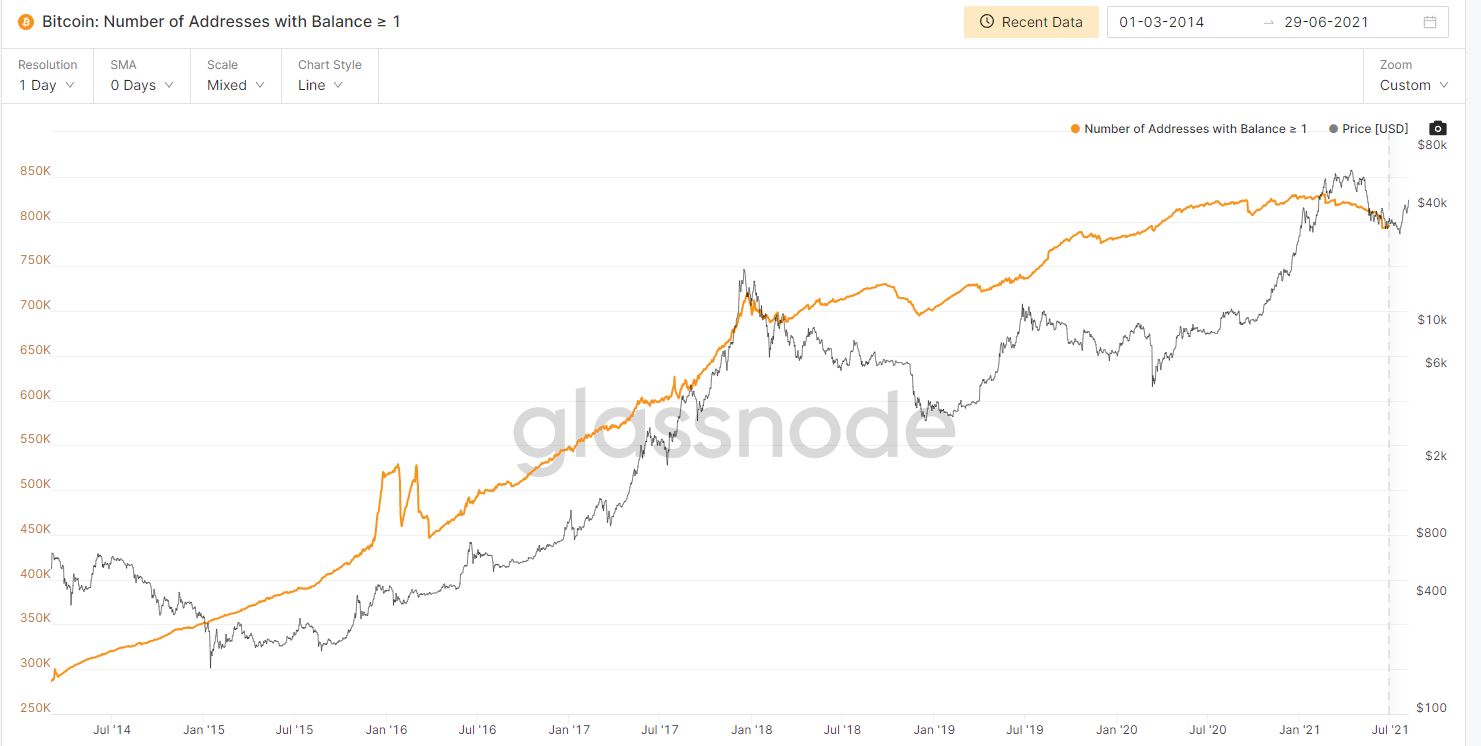فقد أكثر من 80 ألف مستثمر في البيتكوين (BTC) صفتهم كمليونير، وذلك بسبب انهيار الأسعار في سوق العملات الرقمية.
ويشار إلى أنه عندما وصل سعر البيتكوين إلى أعلى مستوى له على الإطلاق عند مستوى 69 ألف دولار، وصل عدد المحافظ التي تزيد أموالها عن مليون دولار 108886 محفظة، وفقا لبيانات خدمة تتبع المحافظ ” BitInfoCharts“.
وبعد انهيار سعر البيتكوين إلى مادون 20 ألف دولار، تشير البيانات إلى وجود 26284 محفظة فقط تمتلك ما يزيد عن مليون دولار، مما يعني أن عدد أصحاب الملايين قد انخفض بنسبة أكثر من 75%، خلال تسعة أشهر.
بالإضافة إلى ذلك، أثر انهيار سعر البيتكوين على الحيتان (الذين يمتلكون عملات رقمية بسعر أكثر من 10 ملايين دولار)، حيث كان عددهم في تشرين الثاني (نوفمبر) الماضي 10587 محفظة، بينما بقي الآن 4342 محفظة، وذلك بانخفاض بنسبة 58%.
وفي نفس الوقت، فقد زاد عدد محافظ المستثمرين الصغار الذين يملكون أكثر من 1 بيتكوين في محافظهم، حيث ظهر أكثر من 13 ألف عنوان جديد (محافظ تحتوي على 1 بيتكوين أو أكثر)، وبهذا أصبح العدد الكلي 860 ألف محفظة.

وهذا يشير إلى أن المستثمرين الصغار يحاولون جاهدين لتكديس أكبر كمية ممكنة من عملة البيتكوين خلال انهيار السعر.
بينما زاد عدد المحافظ التي تمتلك أكثر من 0.1 بيتكوين 250 ألف محفظة خلال الـ20 يوما الماضية.

والجدير بالذكر أن سعر البيتكوين وباقي العملات الرقمية تأثر سلبا بشكل كبير بسبب العديد من المشكلات، بما في ذلك زيادة التدقيق التنظيمي والاضطرابات الجيوسياسية المستمرة وارتفاع التضخم وارتفاع أسعار الفائدة.
ونظرا لحالة عدم الاستقرار وعدم اليقين في المستقبل في الأسواق العالمية، يبدو أن العملات الرقمية (التي تعتبر أصولا خطيرة) قد تستمر في المعاناة لفترات طويلة.






